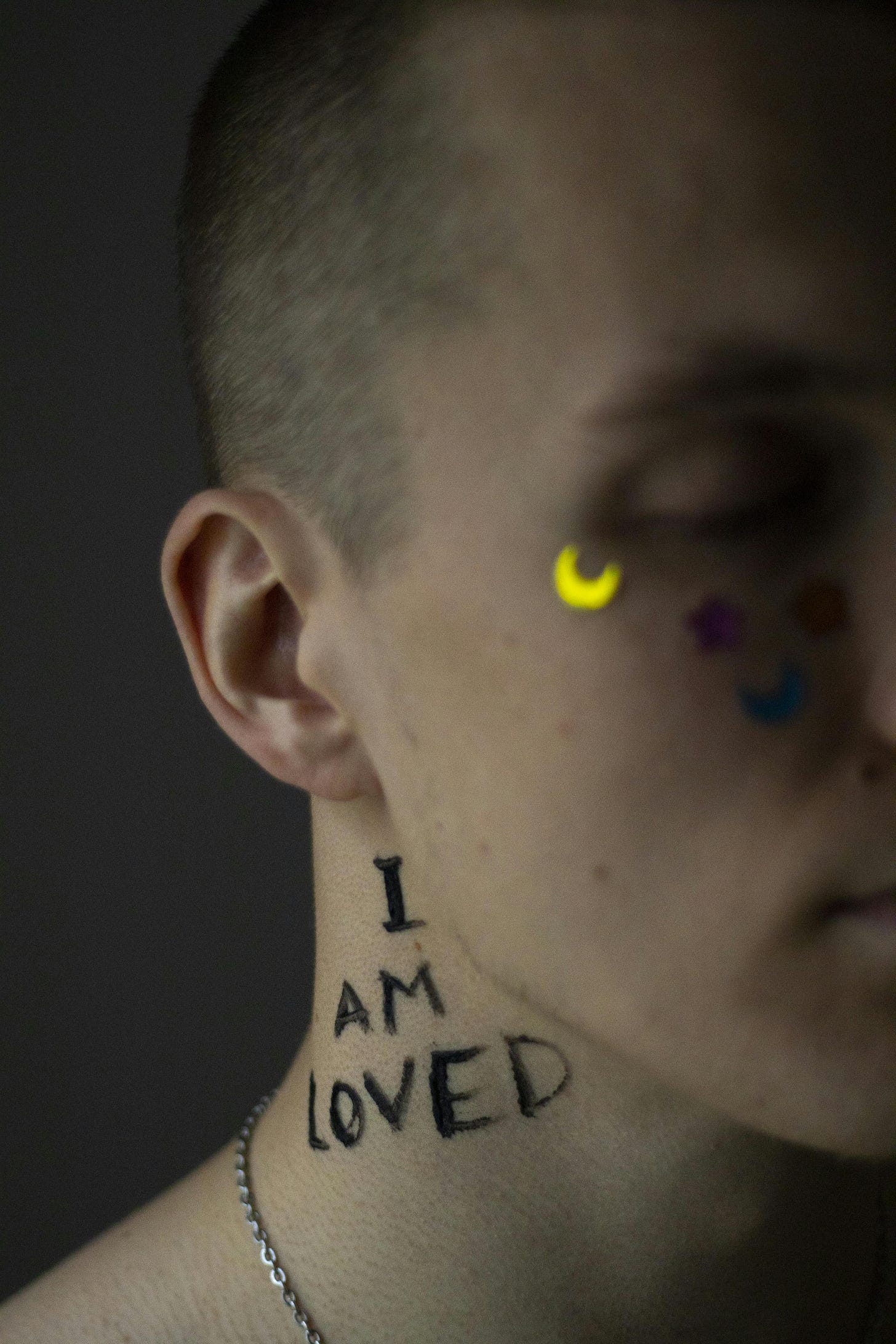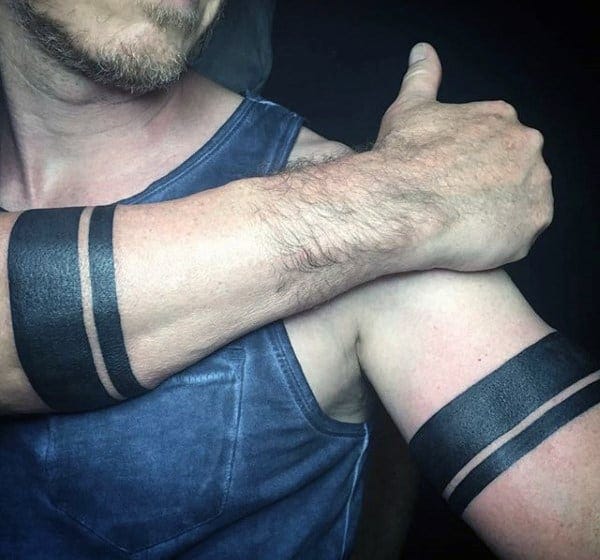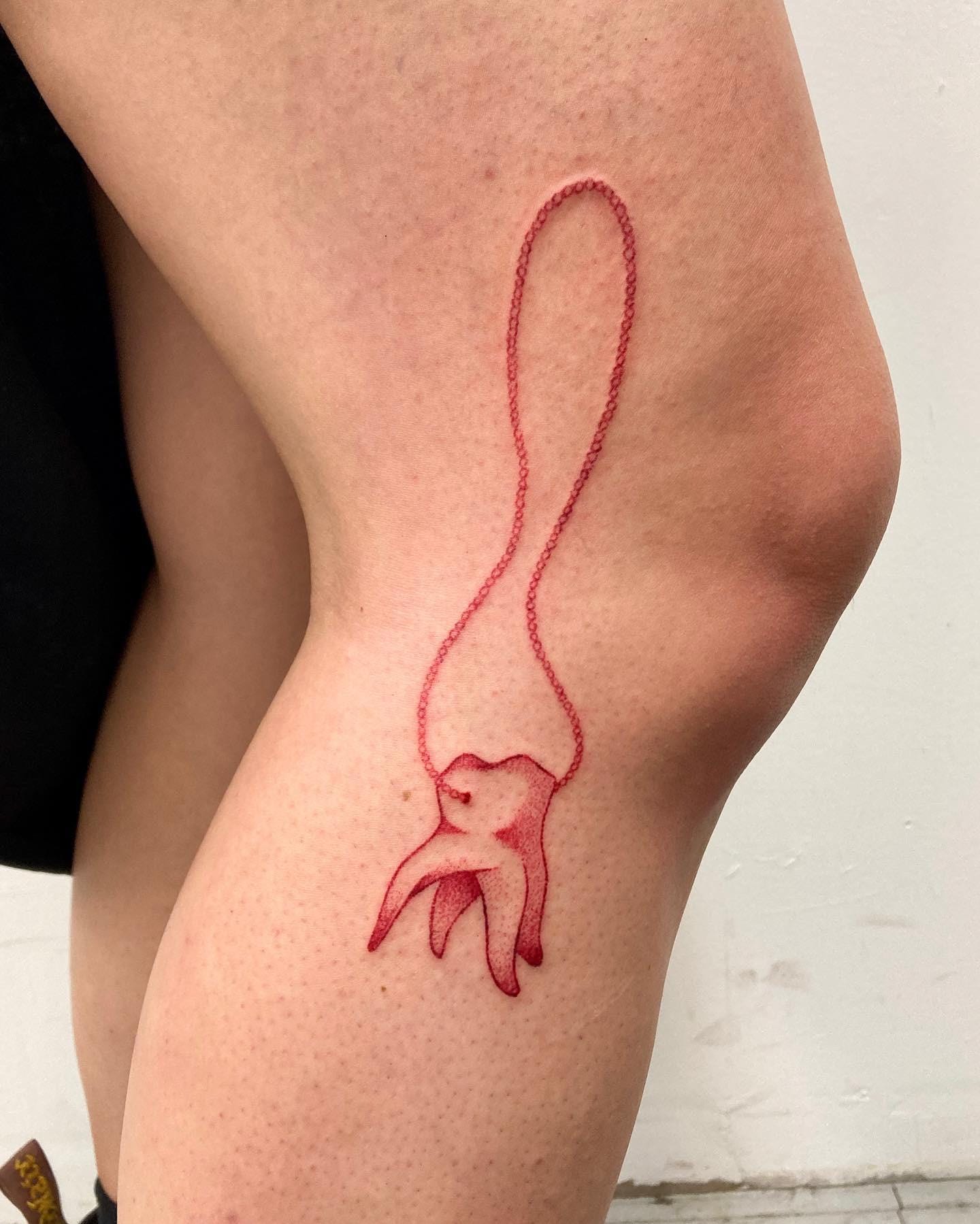Overcoming My Tattoo Taboo
Body positivity seems to drive the latest compulsion for body art—does that mean I lack proper self-esteem?
When I mentioned my conflicted feelings toward tattoos during a recent Zoom meeting, Simone decided to tell me about her own. Pushing her hands closer to her computer’s camera, she showed off the simple ones located between her thumb and index finger (a Virgo symbol) and on each of her wrists. They seemed basic, and I smiled in approval—since she said it was proof of her body positivity—but inside felt a familiar tremor of confusion. Why would you want to mark yourself so visibly with something so slapdash?
Yet that’s been the trend recently. Whereas a certain swath of Millennials embraced body art in the 21st century, spending thousands on gorgeous, curated full sleeves with carefully composed details, complex shading and vibrant colors (I’m recalling Emily Gould on the 2008 cover of the New York Times Magazine, with her colorful flowery biceps, which provoked an older journalist to comment to me, “She’ll regret then when she’s middle-aged), the latest movement seems to be something that looked like throwaway doodles and boring mistakes. What was the message that they wished to convey?
“Nothing,” I was told multiple times. “There is no symbolism. No deeper meaning. I’m not trying to communicate anything. Well, maybe that I love my body.”
Wait, you love your body by marking it with meaningless lines, letters, numbers and squiggles?
Perhaps it’s a generational schism that I can’t expect to surmount. Of course, I know my own particular conundrum has to do with notions of taste and class and more deep-seated issues connected to my upbringing. You see, my parents never wanted us to appear like white trash. Yes, I know I shouldn’t use such a slur. But the fact of the matter is that uncles and cousins and others from my South Florida extended family would most likely fit the bill. The Butchies, Harveys and Jimbos, Ramonas, Bettys and Shirleys and others who lived in trailers and ramshackle houses that fill in the poorer parts of Broward County and other unincorporated meccas that simmer and sweat in the tropical humidity. The tattoos of these truckers, mechanics, and strippers (and let’s not forget the housekeepers, plumbers, and lifeguards) marked them as lesser. Grouping them with convicts, con-men and the drug-addled may seem unfair—as if they were our contemporary version of pirates and ne’er-do-wells. Whether a discreet butterfly, a Dead dancing bear, a dagger or a gothic-styled name of someone dearly departed, a tattoo wasn’t something you got to show pride, it was a way to show you belonged to the underclass.
Or so I’d been taught.
It’s not that I don’t enjoy them on most bodies. Growing up on military bases as a horny gay kid, I had plenty of bare flesh to ogle, so the USMC brands and Superman symbols and panoply of flash art—hearts and anchors, bulldogs and swallows—have populated my erotic fantasies for decades. For every sexy vintage image or stylish homage to Bettie Page, there have been the creepy and bizarre (the shirtless bartender with a fully realized baby’s face on his left shoulder blade provided plenty of nightmare fuel).
The tramp stamps have been the most cringeworthy. For gay men, I assumed they were proclaiming their status as a bottom, since the only people who would see that dolphin or rainbow star on their lower spine would likely be a guy who meant as an invitation to insert from behind The craziest one I ever witnessed was a woman who admitted that she’d been a huge fan of the HBO prison rape drama Oz, so she’d the series logo emblazoned on the soft, fuzzy spot just above her butt. The message: to be to bend her over?
In the early 2000s, so many pumped up men adopted a tribal pedigree: with bicep bands of black thorns or Celtic knots, so many appropriated Polynesian designs. You’d notice them at dance parties, arms raised and covered in perplexing dark-green ink. Now, the latest are ubiquitous bold black bands of varying thickness on forearms that resemble a covert measuring system for those in the know. Apparently, they are devoid of meaning—and therefore no fear of pilfering another’s culture. Then again, some say the ubiquitous armband is just a coverup for other things.
Beyond the generic appropriations—which have mysteriously disappeared for the most part— something altogether more random has gained traction. Recently, I noticed a full set of teeth drawn in red ink around the right knee of a young gay man with an un-ironic mullet.
“What inspired you to get the lower mandible on your leg?” I asked.
“Oh, I was bored during the pandemic,” he said nonchalantly. He explained that he’d ordered a tattoo gun and began practicing on himself and his roommate as a way to pass the endless hours stuck inside.
“She has a really bad one I gave her,” he said, with a wicked grin. “My mistake. Like, really terrible and embarrassing.”
I winced. In pain? In embarrassment?
“Why?” I blurted out. “I mean, I don’t get it. Um, what’s your sign?”
Asking such a corny question in not something I’d dared to ask even a decade ago, but now it’s pretty common among the younger set to sort one another based on astrological symbols, Enneagram types or which Hogwarts House they’d belong to.
“Libra,” he shared.
“I see,” I replied, as if I could intuit something from this knowledge. I’d begun noticing that nearly all me and my Gemini friends were sans tattoos, and I explained as much. “Maybe we just can’t commit?”
“Maybe,” he said and laughed.
(I’ve since learned that there’s apparently a trend of people getting a “string of teeth” tattoo and people have wondered what it is all about—the answers aren’t helpful.)
A similar thing occurred a week later at the gym when I noticed a large tattoo in the shape of a squished star on a young woman’s knee—composed of an assemblage of 8s, 1s, asterisks and other keyboard symbols—and asked her what it meant.
“My mom hates that I say this,” she confessed. “But it means nothing. I just wanted a tattoo to show that I loved myself and my body. She wishes I’d make up something better, like it symbolized something profound, but it doesn’t.”
An Aquarius. I asked.
As with most subjects, when I’m curious and confused, I use my journalistic skills to query experts in search of an answer. Around 2009, I interviewed a well-known tattoo artist in New Jersey for a big business story I was working on about a venture to bring parlors into upscale malls and erase the stigma that you had to go to a scuzzy boardwalk or back alley shop to get your ink. He told me stories of moms and their teenage daughters coming in to get tattoos together as part of a bonding ritual. He had no qualms about people’s dubious decisions—although he did have ethics about not accepting clients who were drunk or high since he wanted to make sure they wouldn’t regret their choices. Was anything off-limits?
“I’ll never get a tattoo on my hands or neck,” he said. “Because I want to go to my daughter’s wedding one day, and with a button-down shirt, you can cover up just about anything except in those spots.”
Since then, neck, face and hand tattoos have become more commonplace—a sort of fuck-you to propriety and good standards. I can’t help but think that it also limits certain options: It’s a public proclamation that you’ll never take a boring desk or office job and that you aspire to some sort of creative station in life that doesn’t require conservative decorum.
It’s not that I haven’t imagined possible tattoos for myself. I have a jagged 8-inch scar on my right thigh from a stupid eighth-grade accident that I thought I could cover up with some savvy design work but could never come up with a suitable idea that inspired me. For years, I sketched a vintage flower and moths with exquisite details or an engraving of a giant squid with its tentacles wrapping around my shoulder. I love the Catalan word for octopus—pop—and devised a Pop Art version of a cephalopod with the word underneath like a Keith Haring knock off. Maybe, as in modern art, abstraction was the answer. I adored the refined geometric patterns that some sophisticated aesthetes curated on their clavicles, down their spines, and around erogenous regions. Surprise epiphanies of minimal genius. But nada. Not for me.
After years of contemplation, I could always find a reason to wriggle away from the commitment to such a thing. Perhaps I lacked courage, although I chalked it up to the reality that I never loved something so much that I wanted it permanently emblazoned on my epidermis. Wouldn’t it be easier (and cheaper) to get a framed print for the bathroom? Part of it was the fear of judgment: Imagining the way someone would scoff at my dumb decision.
That’s why the latest explanation that I’ve heard—that I love my body, myself, so much that I want proof—has thrown me for a loop. As if I am in some way deficient in the proper amount of self-love. So is it time? Shouldn’t I chuck all those inhibitions and mental strictures and just go in blindly and tell the man with the needle to use me as a blank canvas.
“Whatever you want,” I’d instruct, my eyes clenched shut. “The more pointless the better?”
Or I’m just too much of a Gemini.






